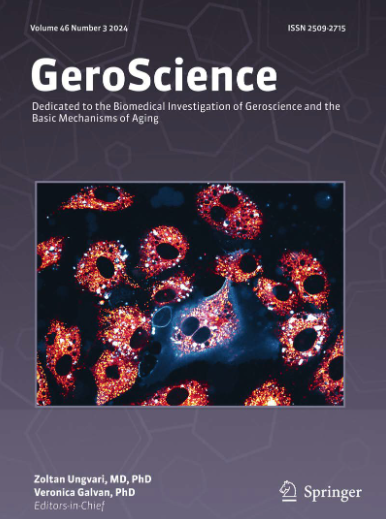不同的因素解释了75岁以下和75岁以上老年人的生活空间流动性。
IF 5.4
2区 医学
Q1 GERIATRICS & GERONTOLOGY
引用次数: 0
摘要
生活空间流动性(Life space mobility, LSM)对于参与日常生活具有重要意义。它受个人和环境因素的影响,并随着年龄的增长而下降。尽管LSM已经在老年人中进行了研究,但尚未将这一人群分层为年龄亚组,因此在以更细粒度的方式了解LSM相关因素方面存在差距。本横断面研究旨在确定75岁以下及以上社区居住老年人LSM的相关因素。参与者年龄在65岁及以上,没有神经系统疾病或痴呆。LSM的评估采用生活空间评估(LSA)、行动能力评估(TUG)、认知能力评估(MoCA)、跌倒恐惧评估(ABC)、抑郁评估(HADS)。其他自我报告的数据包括就业/志愿服务、离开家的频率、功能状态和药物数量。每个年龄分组分别进行回归模型分析。242名老年人(28.9%为男性)被招募(平均(SD)年龄73.7(6.4)岁),其中40.9%年龄在75岁以上。在较年轻的亚组中,性别、离家频率、TUG和就业/志愿者状态显著解释了42.8%的LSM方差。在老年亚组中,性别、年龄、ABC、MoCA和TUG显著解释了LSM方差的46.9%。不同的因素与LSM在每个年龄亚组相关。因此,未来的干预措施应针对每个亚组单独量身定制。本文章由计算机程序翻译,如有差异,请以英文原文为准。
Distinct factors explain life space mobility below and above the age of 75 years old in older adults.
Life space mobility (LSM) is important for participation in daily life. It is influenced by individual and environmental factors and tends to decline with age. Although LSM has been studied in older adults, stratification of this population into age subgroups has not been performed, creating a gap in understanding the factors associated with LSM in a more granular manner. This cross-sectional study aimed to identify the factors associated with LSM in community-dwelling older adults below and above the age of 75. Participants aged 65 and older without neurological conditions or dementia were recruited. LSM was assessed using the Life Space Assessment (LSA), mobility with the Timed Up and Go test (TUG), cognition with the Montreal Cognitive Assessment (MoCA), fear of falling with the Activities-specific Balance Confidence scale (ABC), and depression with the Hospital Anxiety and Depression Scale (HADS). Additional self-reported data included employment/volunteering, frequency of leaving the house, functional status, and number of medications. Separate regression models were conducted for each age subgroup. Two-hundred forty-two older adults (28.9% men) were recruited (mean (SD) age 73.7(6.4) years), with 40.9% aged over 75. In the younger subgroup, sex, frequency of leaving the house, TUG, and employment/volunteer status significantly explained 42.8% of the variance in LSM. In the older subgroup, sex, age, ABC, MoCA, and TUG significantly explained 46.9% of the variance in LSM. Distinct factors are associated with LSM in each age subgroup. Accordingly, future interventions should be tailored for each subgroup individually.
求助全文
通过发布文献求助,成功后即可免费获取论文全文。
去求助
来源期刊

GeroScience
Medicine-Complementary and Alternative Medicine
CiteScore
10.50
自引率
5.40%
发文量
182
期刊介绍:
GeroScience is a bi-monthly, international, peer-reviewed journal that publishes articles related to research in the biology of aging and research on biomedical applications that impact aging. The scope of articles to be considered include evolutionary biology, biophysics, genetics, genomics, proteomics, molecular biology, cell biology, biochemistry, endocrinology, immunology, physiology, pharmacology, neuroscience, and psychology.
 求助内容:
求助内容: 应助结果提醒方式:
应助结果提醒方式:


